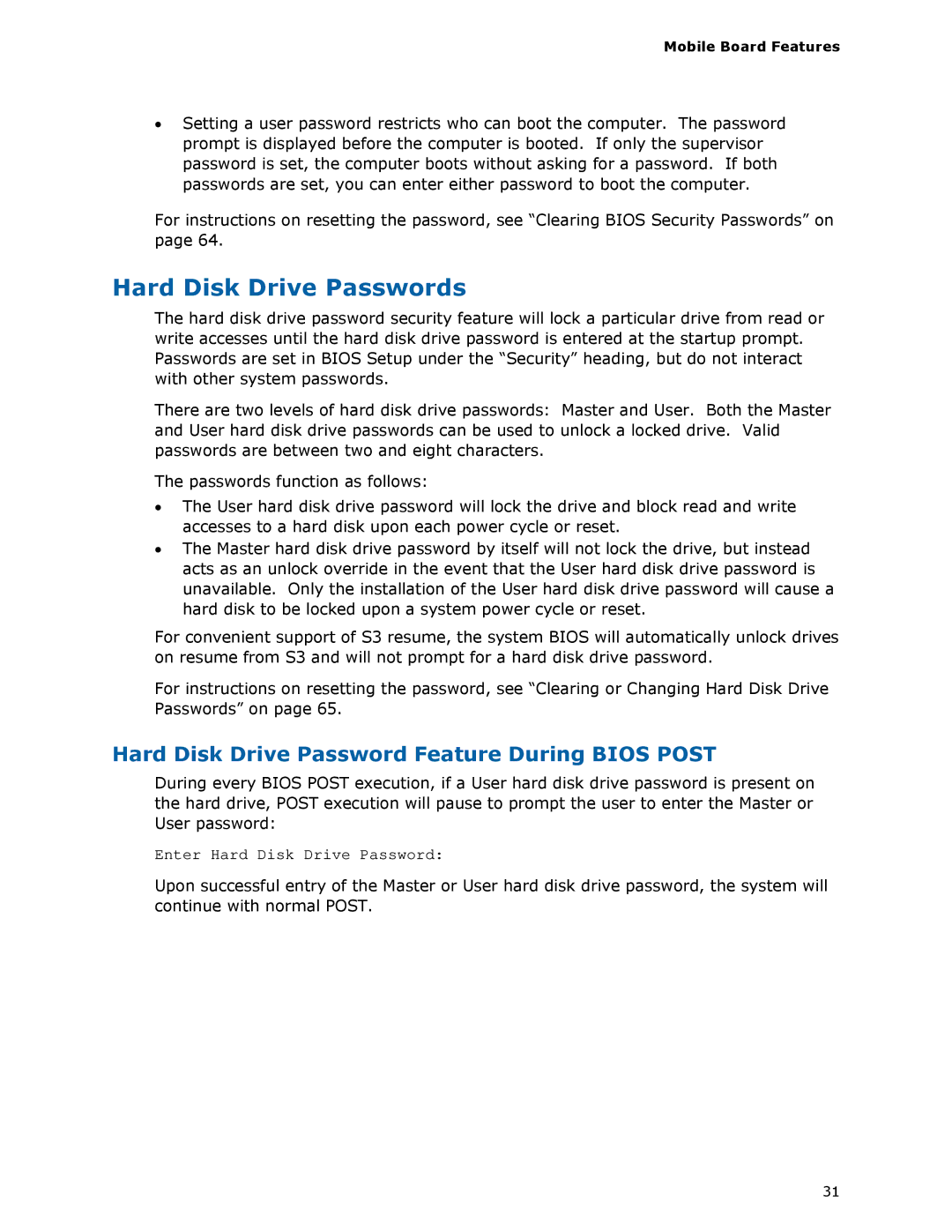Mobile Board Features
•Setting a user password restricts who can boot the computer. The password prompt is displayed before the computer is booted. If only the supervisor password is set, the computer boots without asking for a password. If both passwords are set, you can enter either password to boot the computer.
For instructions on resetting the password, see “Clearing BIOS Security Passwords” on page 64.
Hard Disk Drive Passwords
The hard disk drive password security feature will lock a particular drive from read or write accesses until the hard disk drive password is entered at the startup prompt. Passwords are set in BIOS Setup under the “Security” heading, but do not interact with other system passwords.
There are two levels of hard disk drive passwords: Master and User. Both the Master and User hard disk drive passwords can be used to unlock a locked drive. Valid passwords are between two and eight characters.
The passwords function as follows:
•The User hard disk drive password will lock the drive and block read and write accesses to a hard disk upon each power cycle or reset.
•The Master hard disk drive password by itself will not lock the drive, but instead acts as an unlock override in the event that the User hard disk drive password is unavailable. Only the installation of the User hard disk drive password will cause a hard disk to be locked upon a system power cycle or reset.
For convenient support of S3 resume, the system BIOS will automatically unlock drives on resume from S3 and will not prompt for a hard disk drive password.
For instructions on resetting the password, see “Clearing or Changing Hard Disk Drive Passwords” on page 65.
Hard Disk Drive Password Feature During BIOS POST
During every BIOS POST execution, if a User hard disk drive password is present on the hard drive, POST execution will pause to prompt the user to enter the Master or User password:
Enter Hard Disk Drive Password:
Upon successful entry of the Master or User hard disk drive password, the system will continue with normal POST.
31
